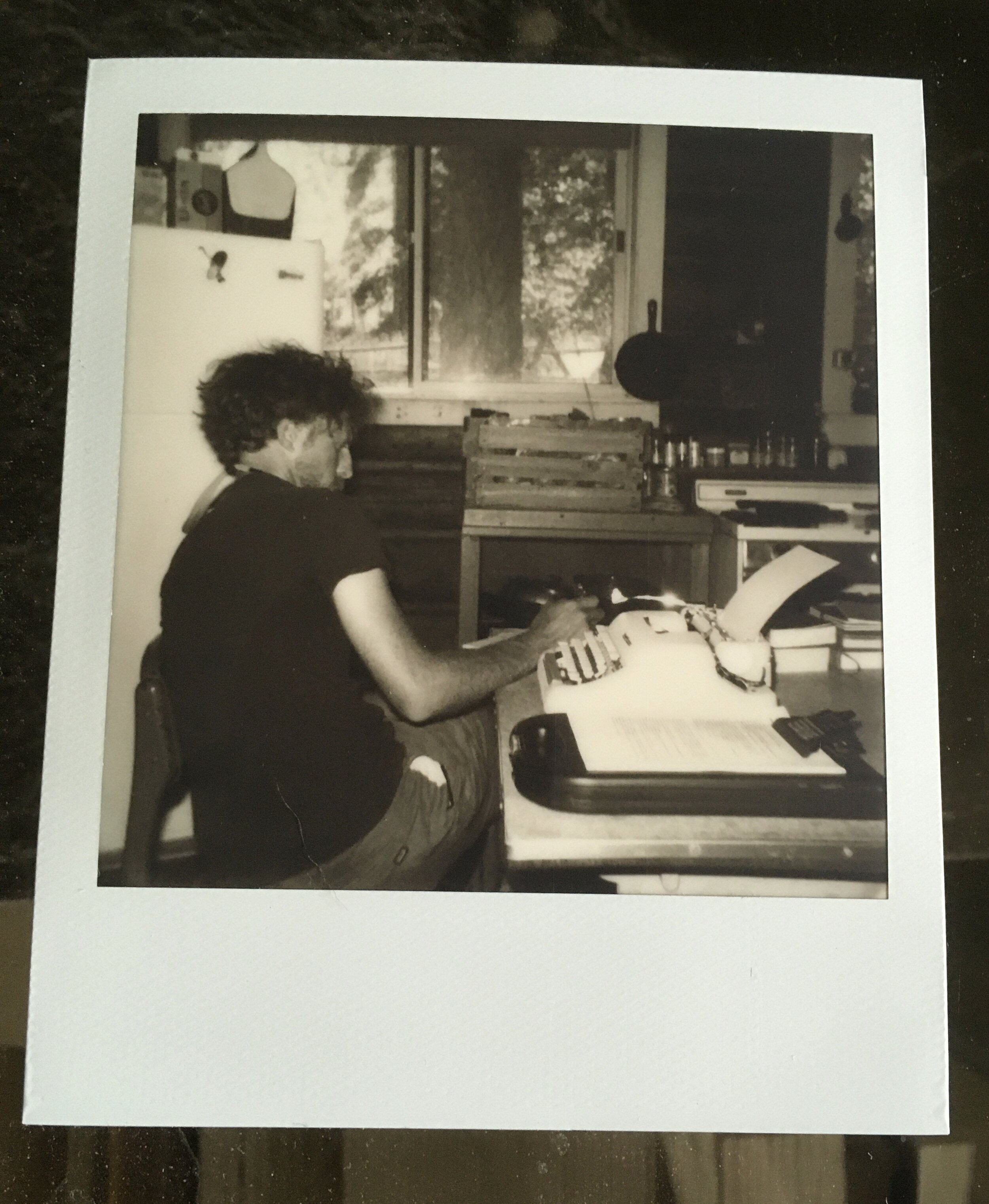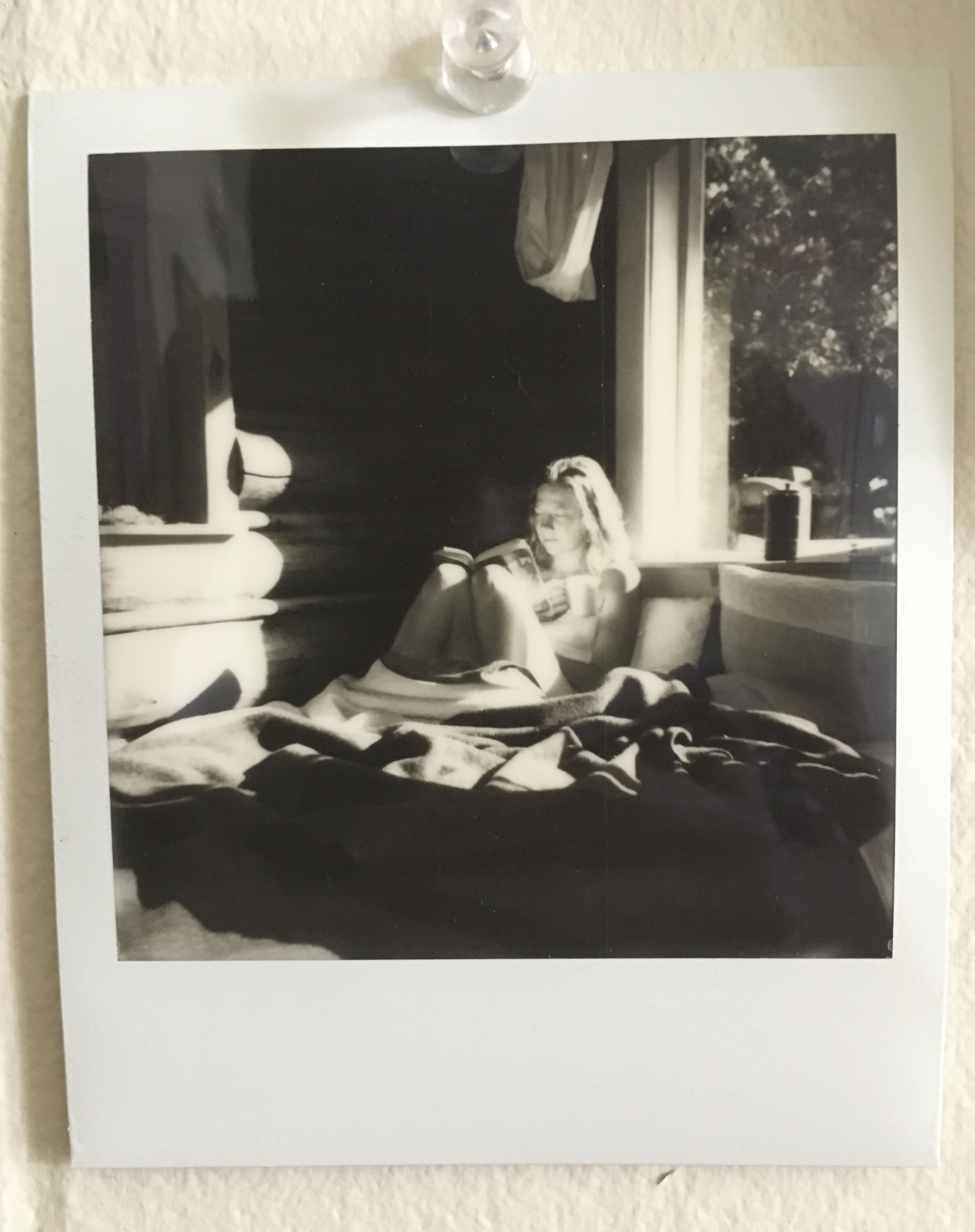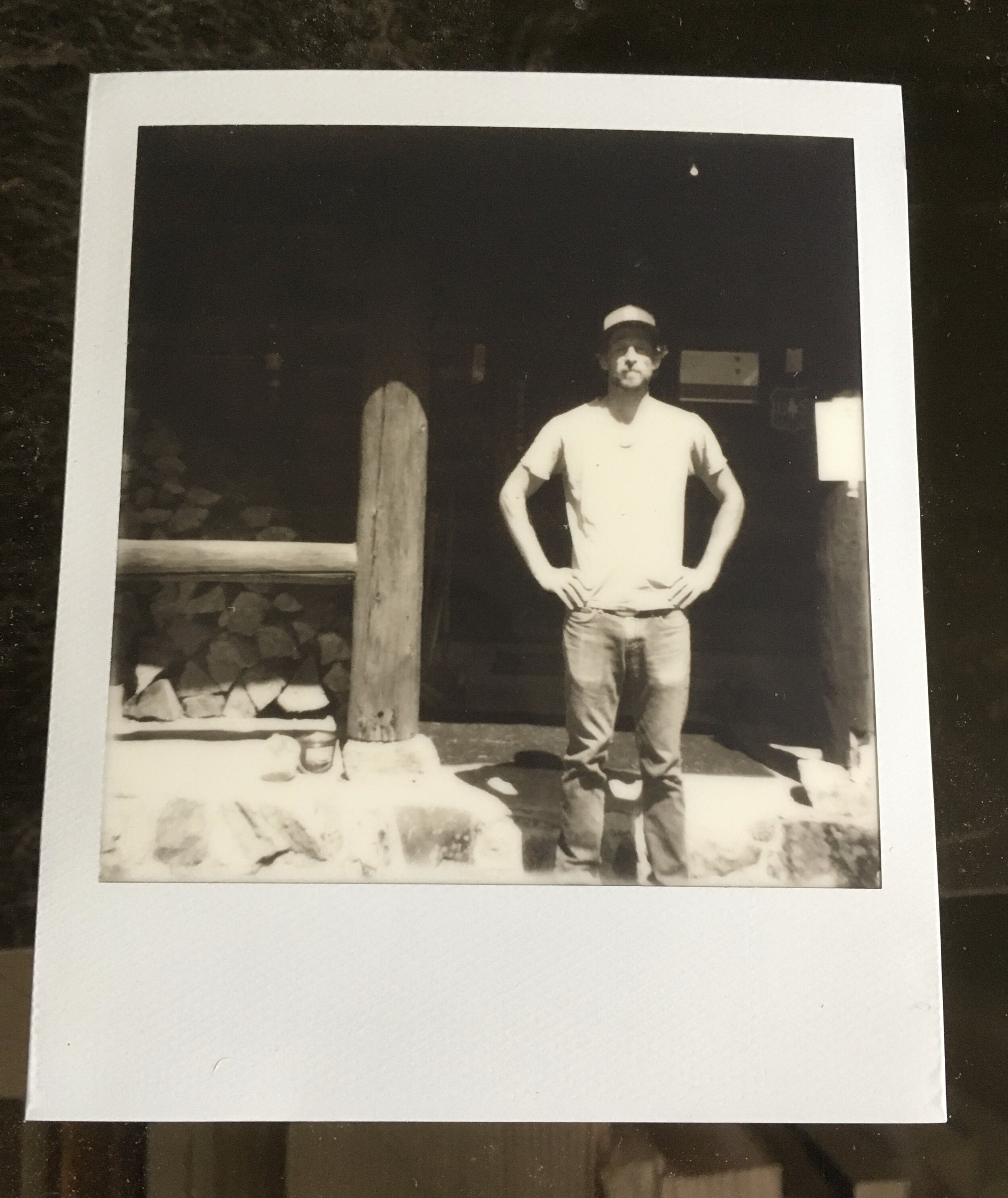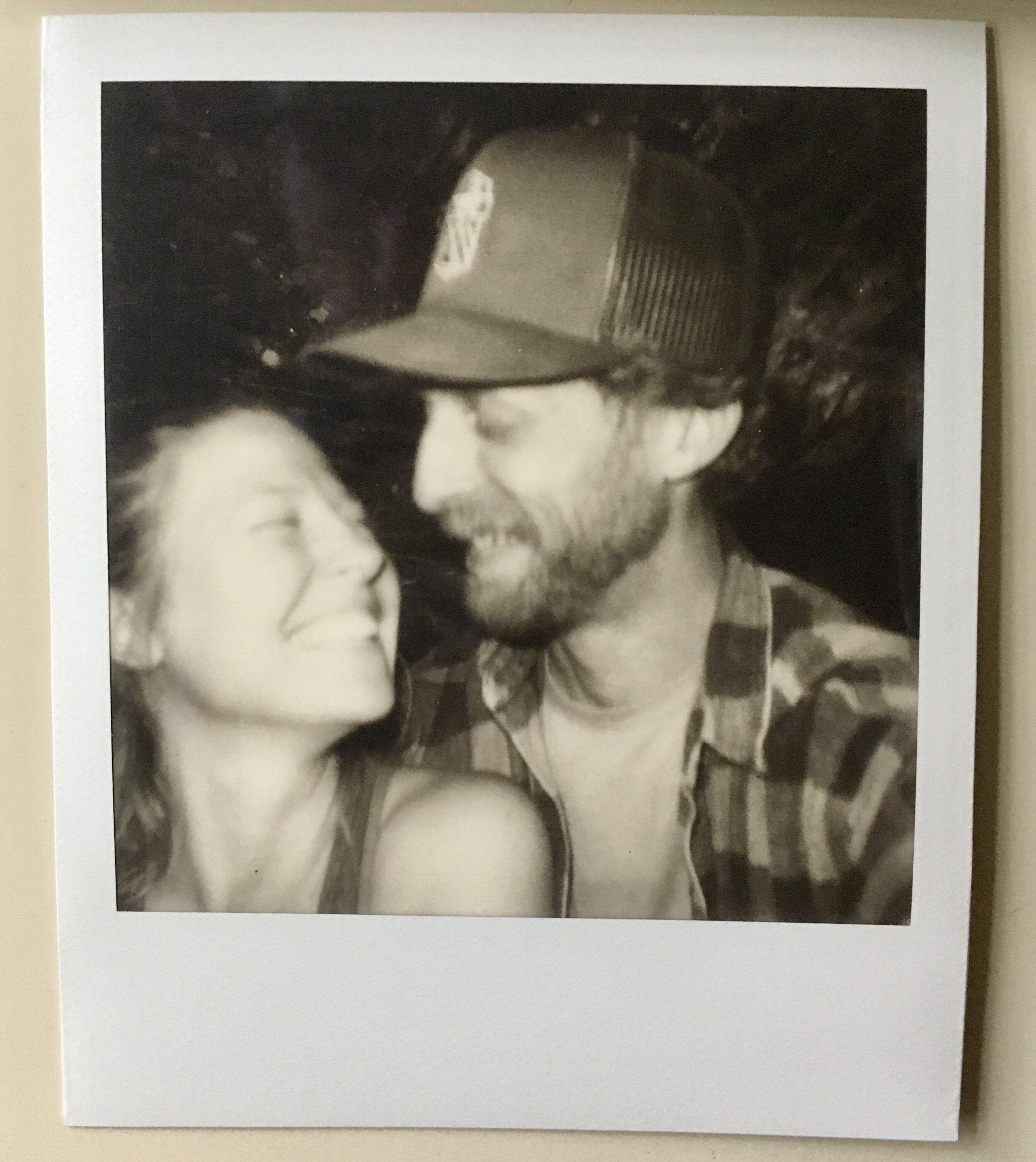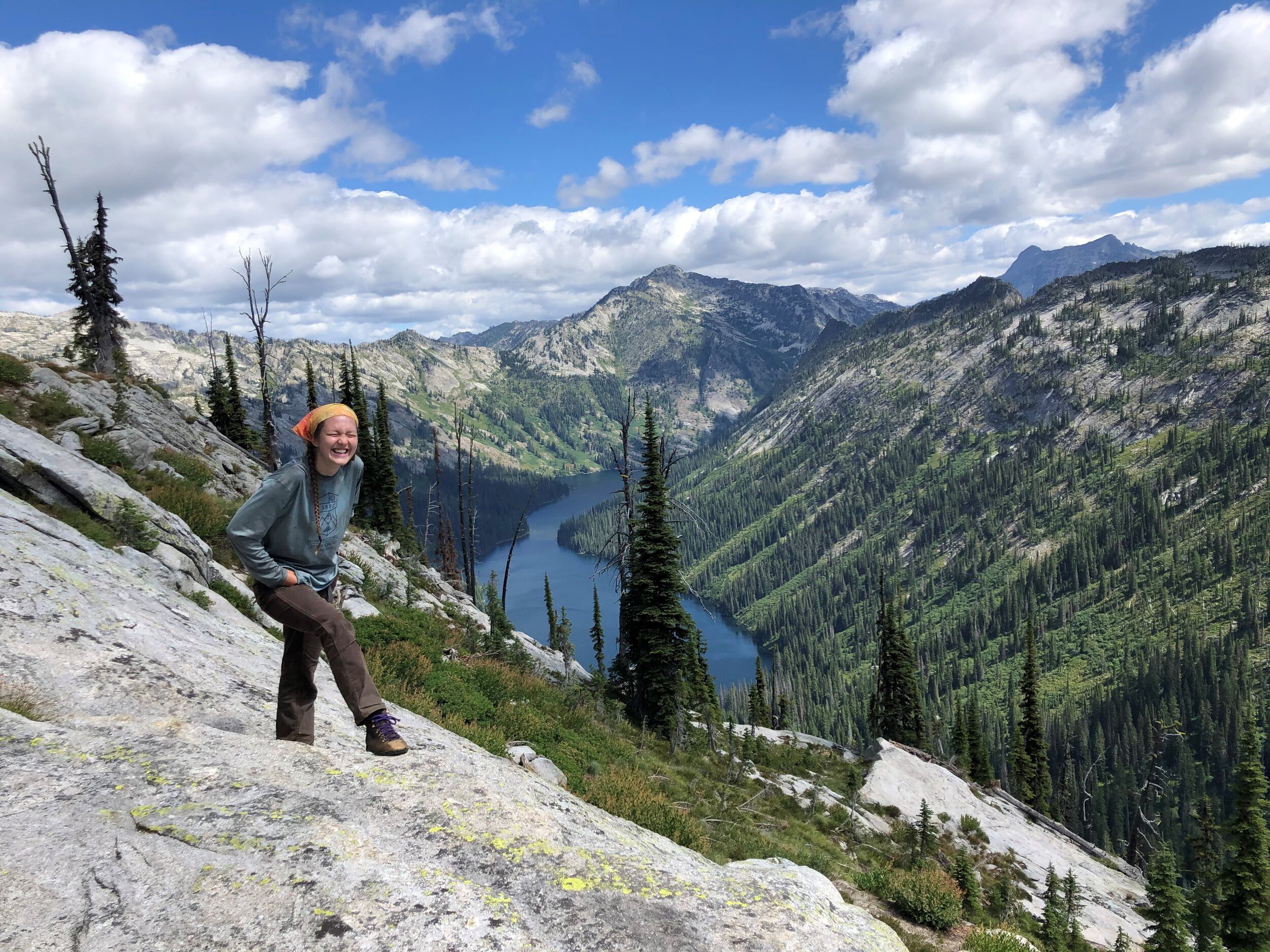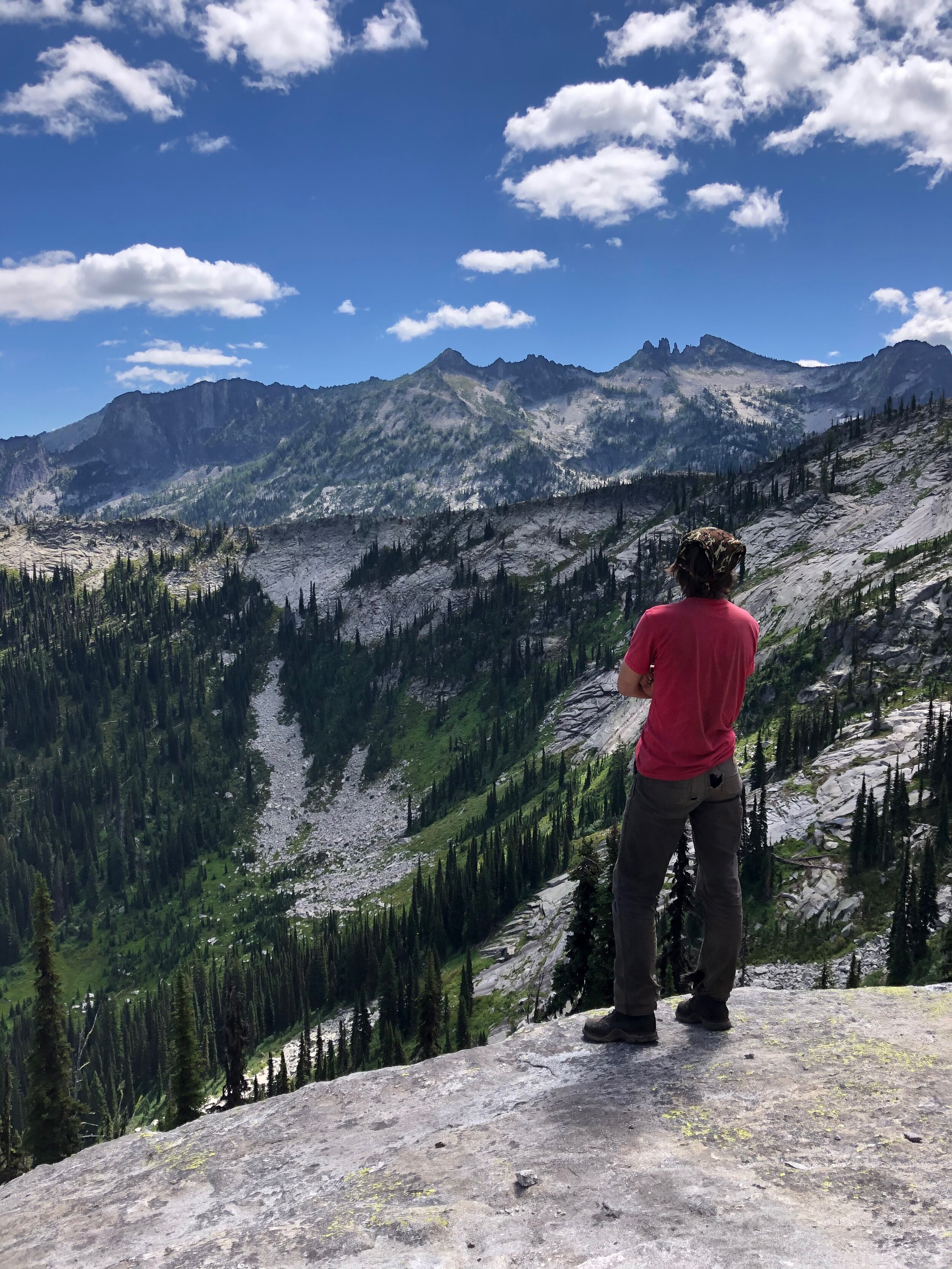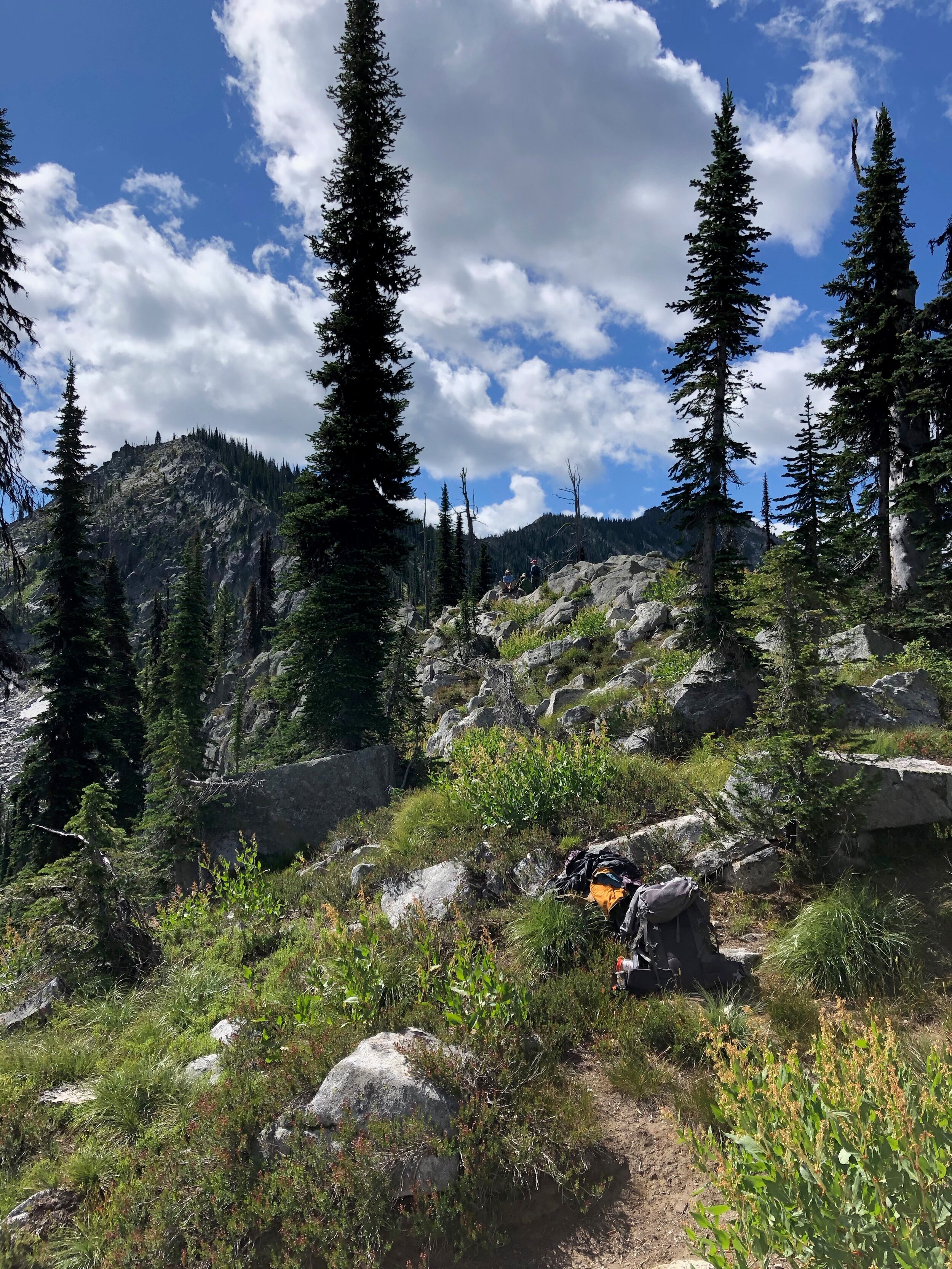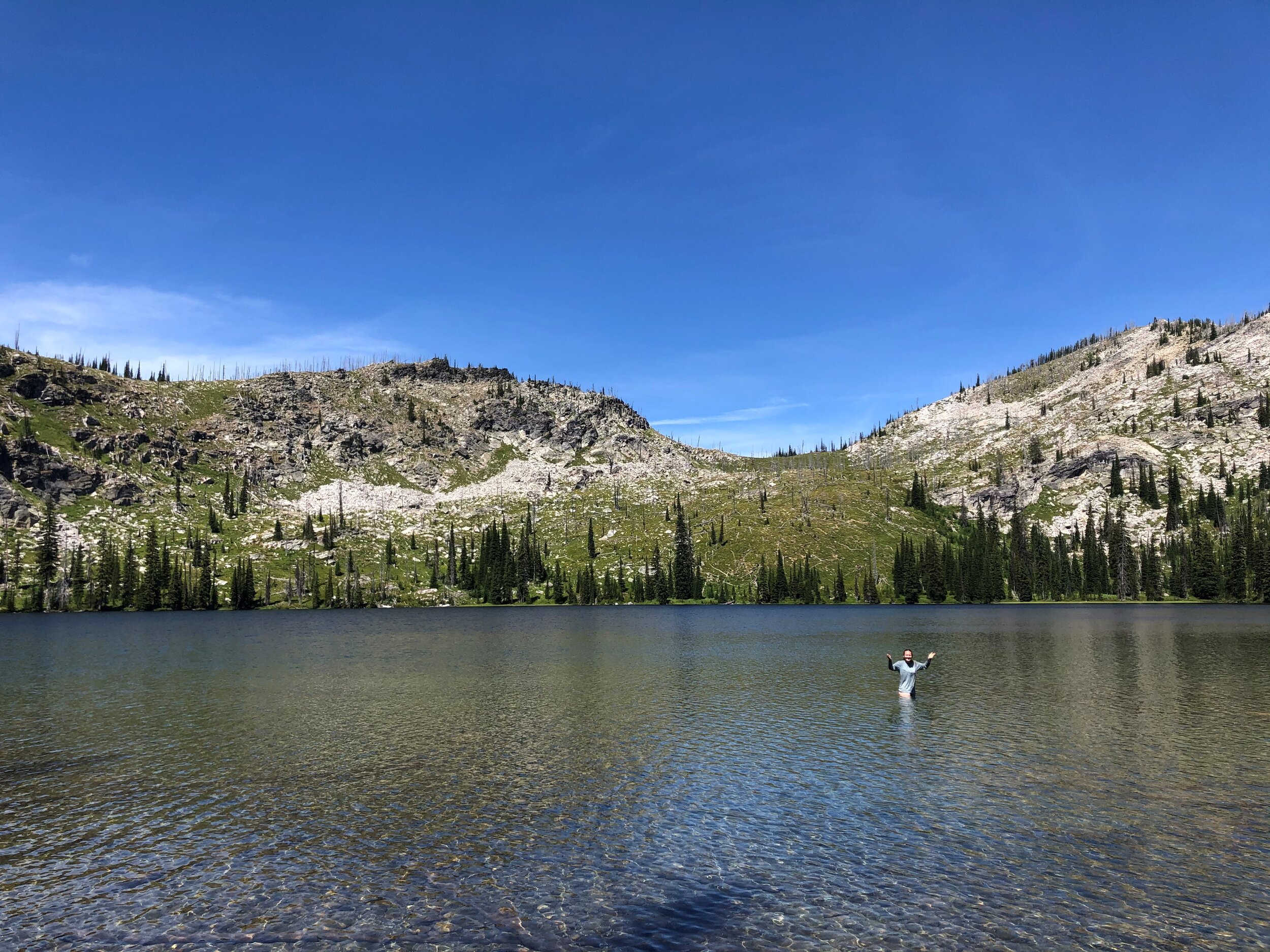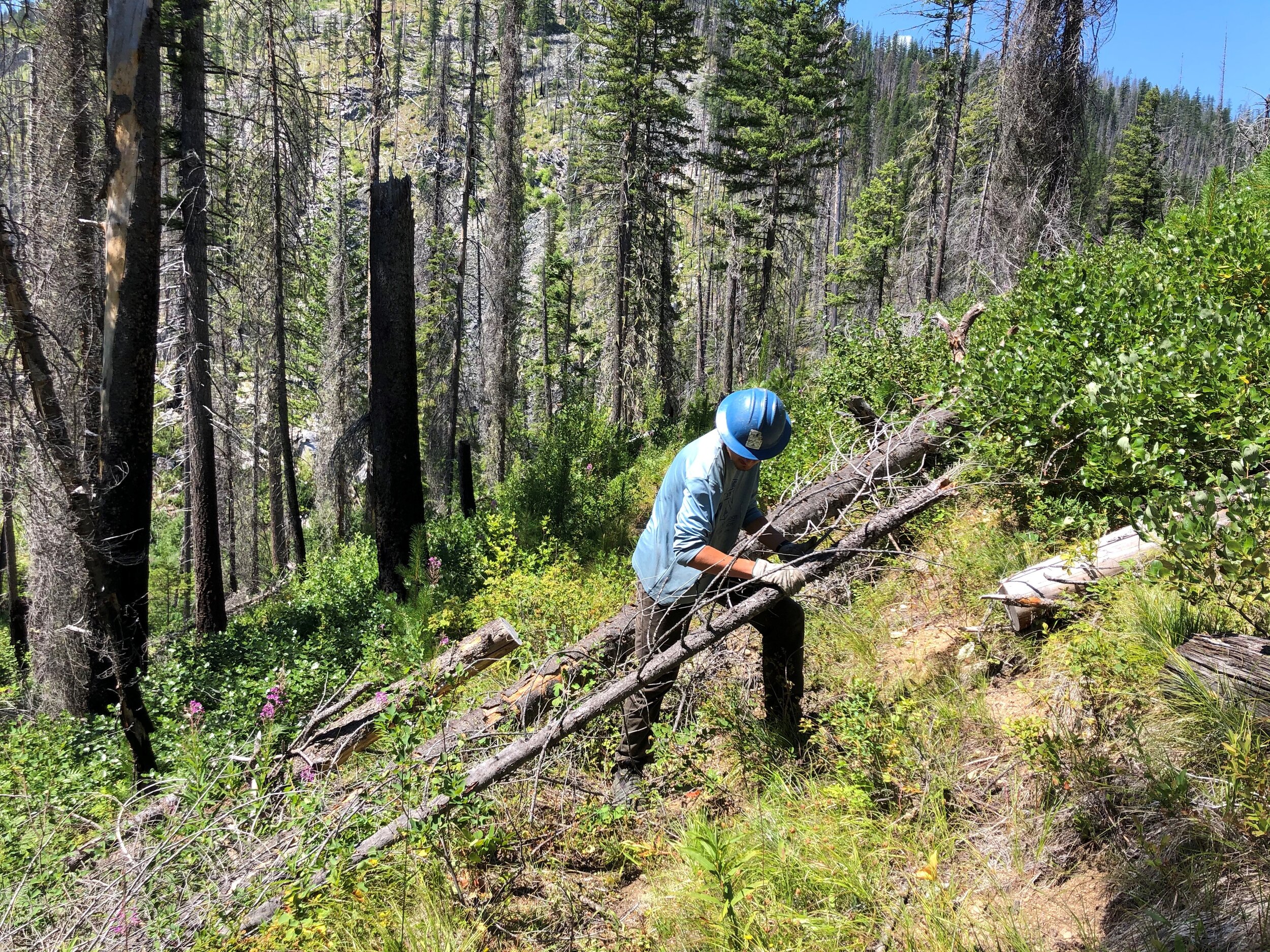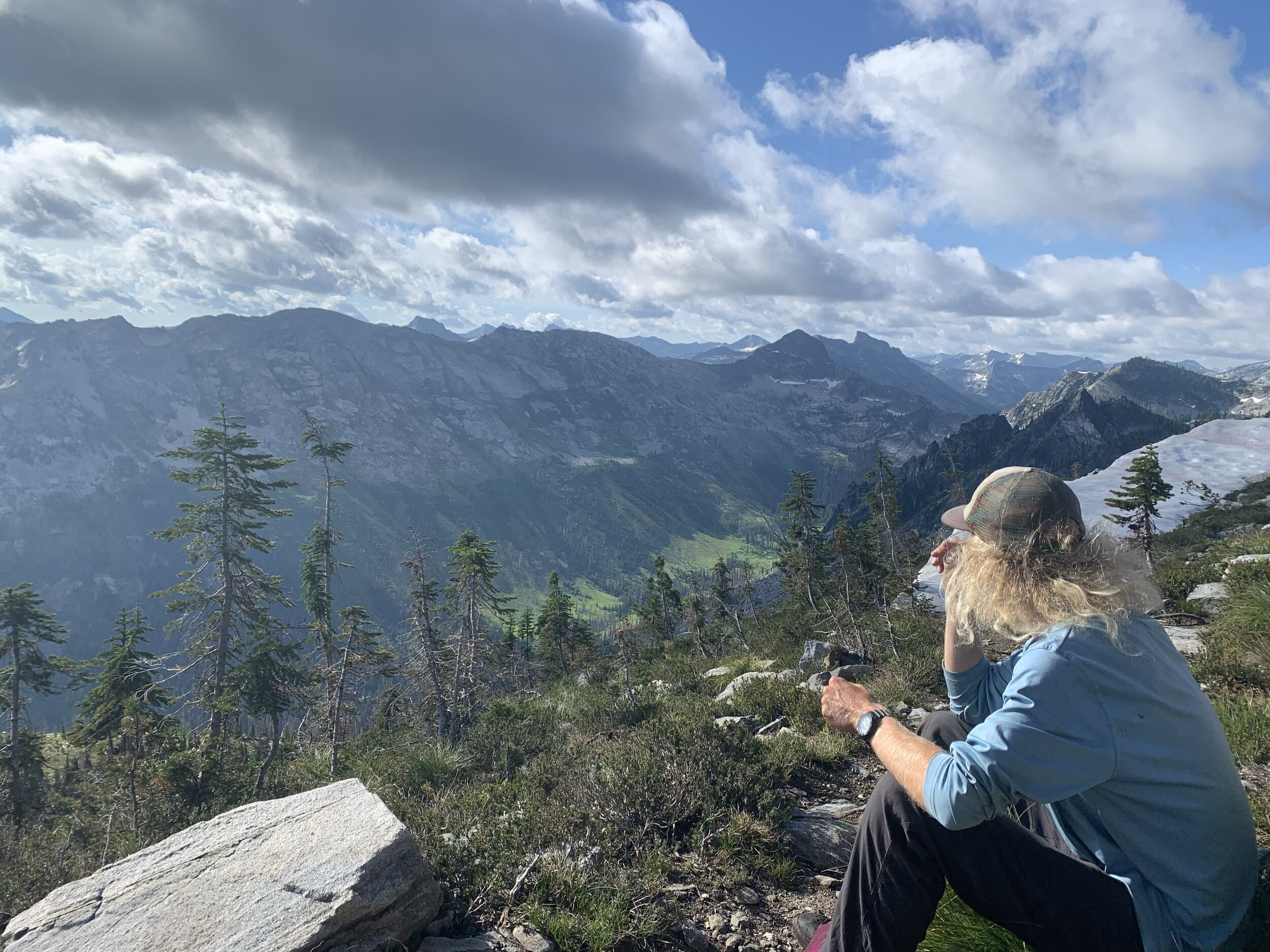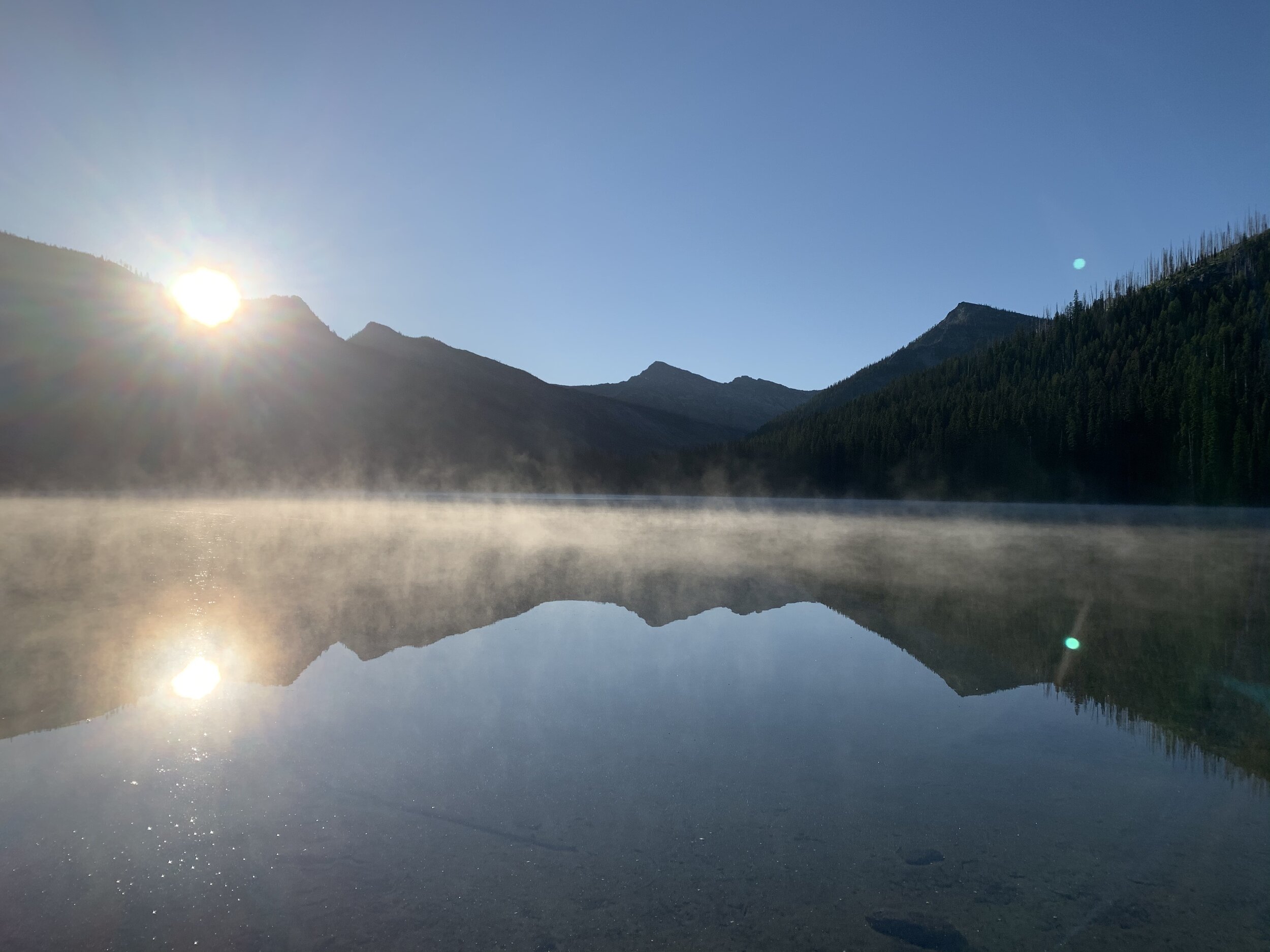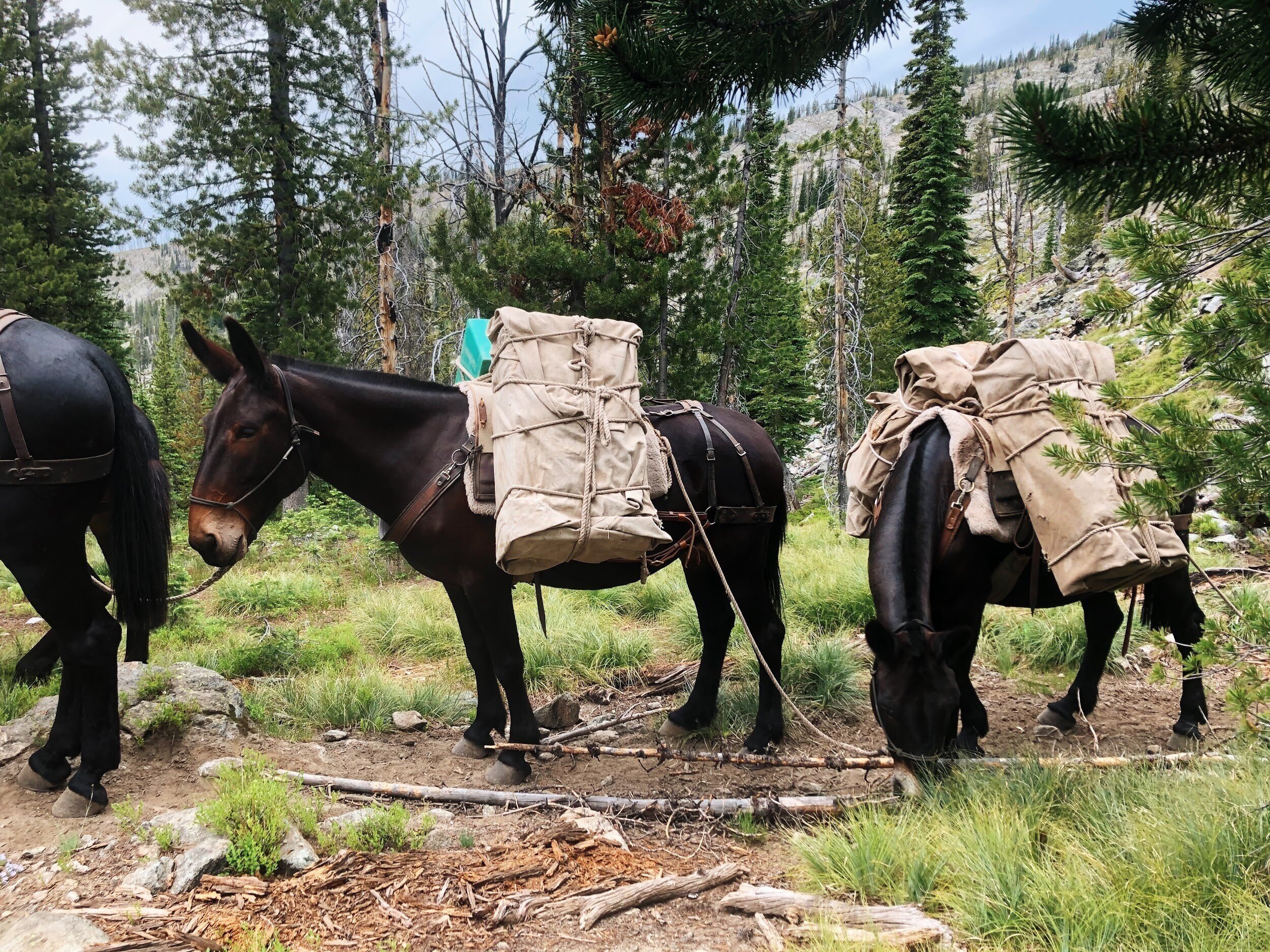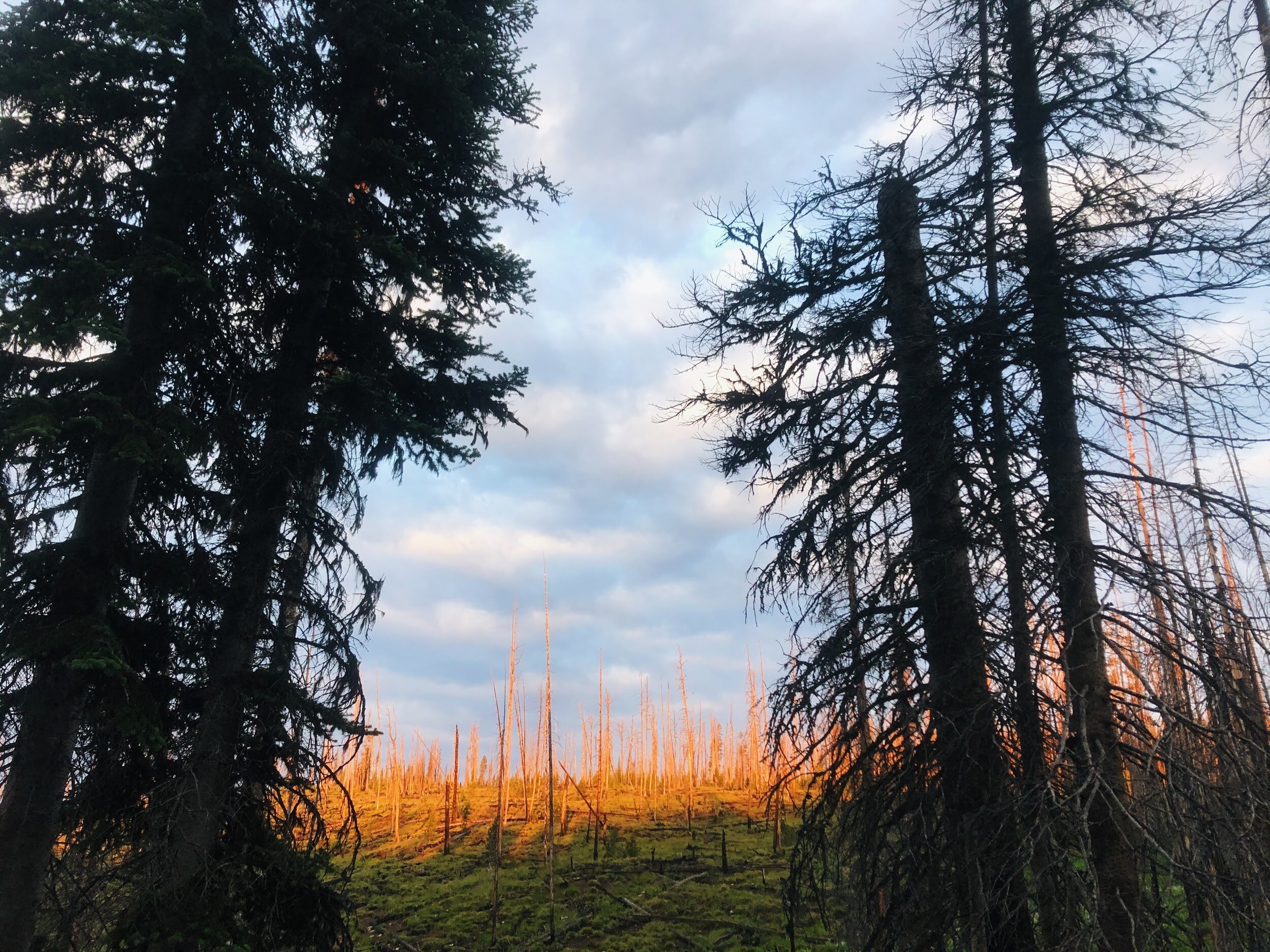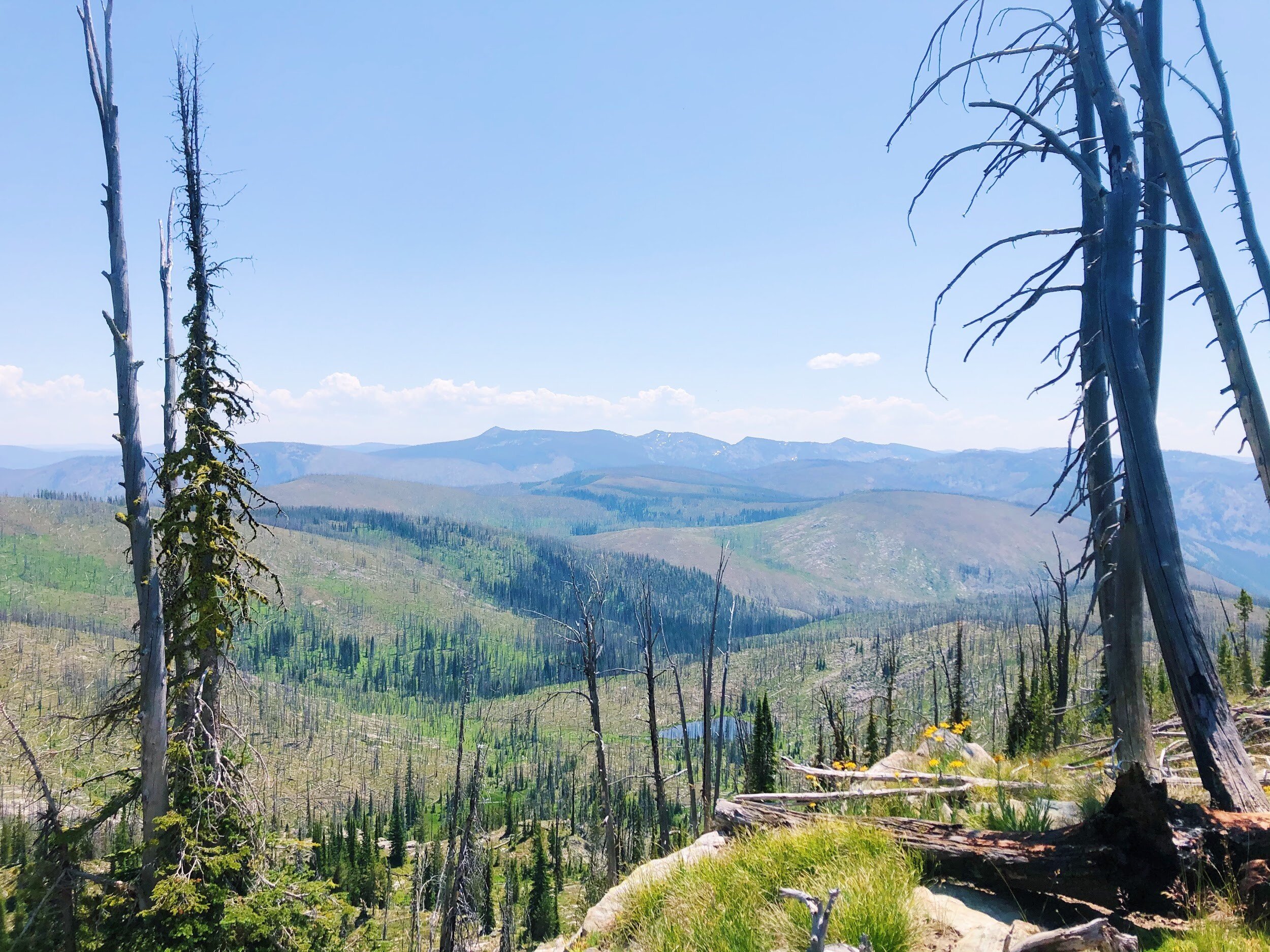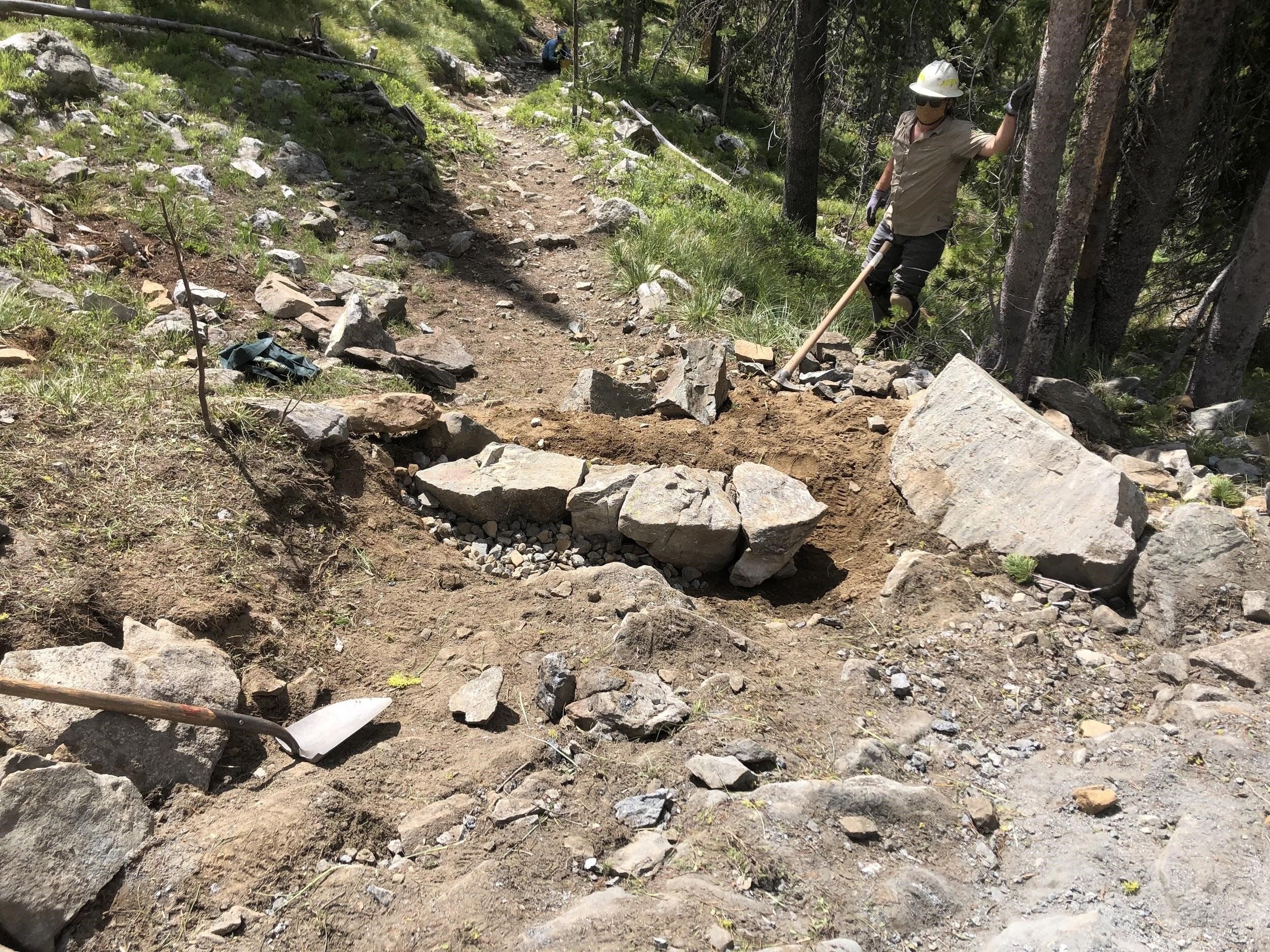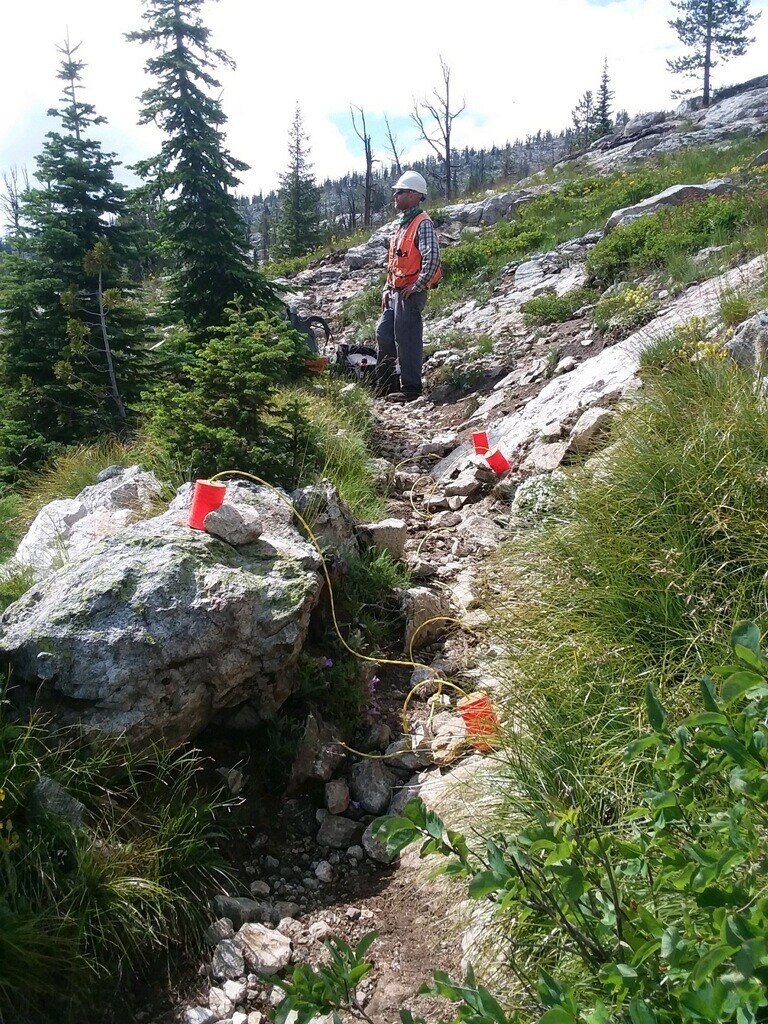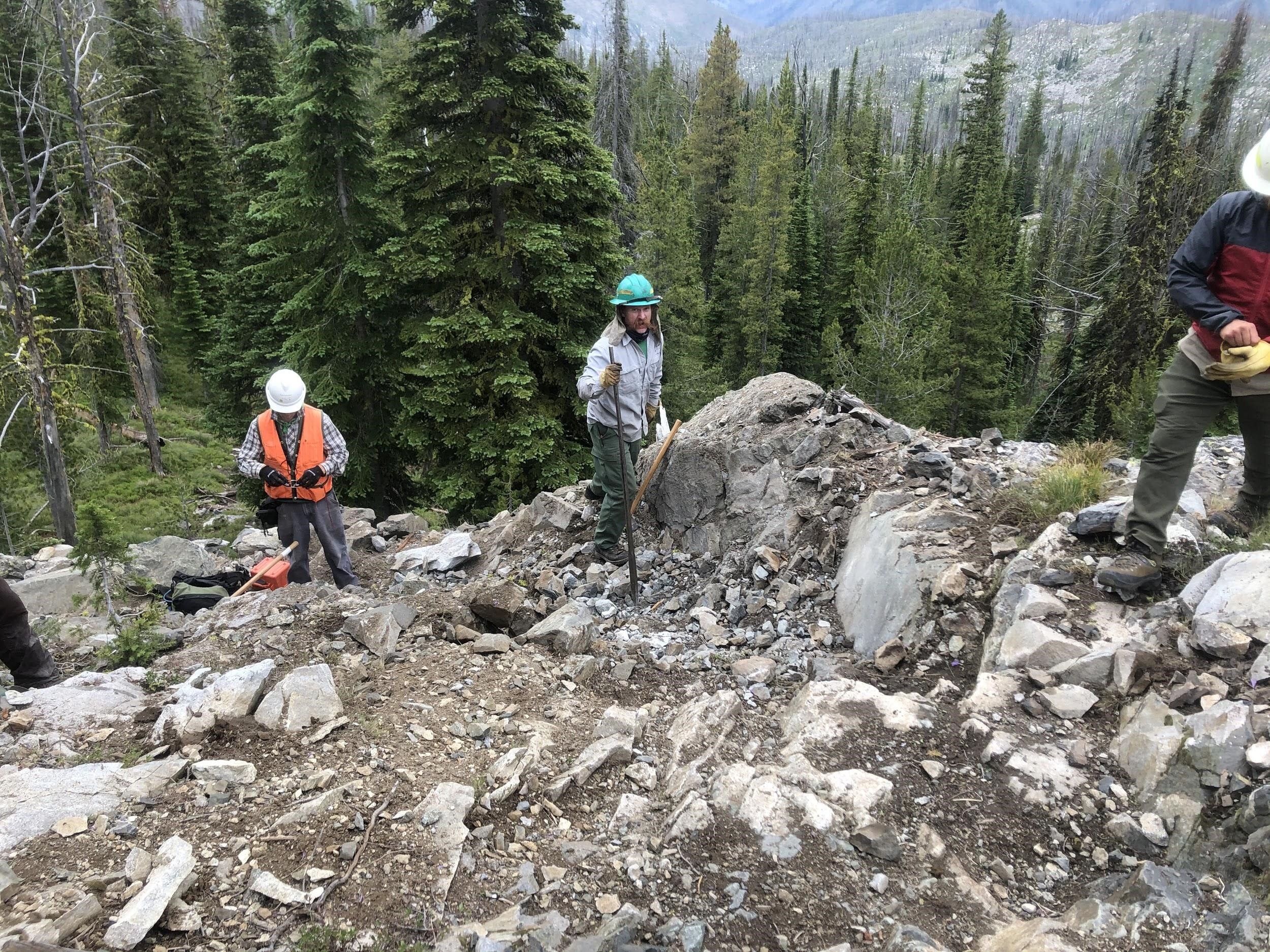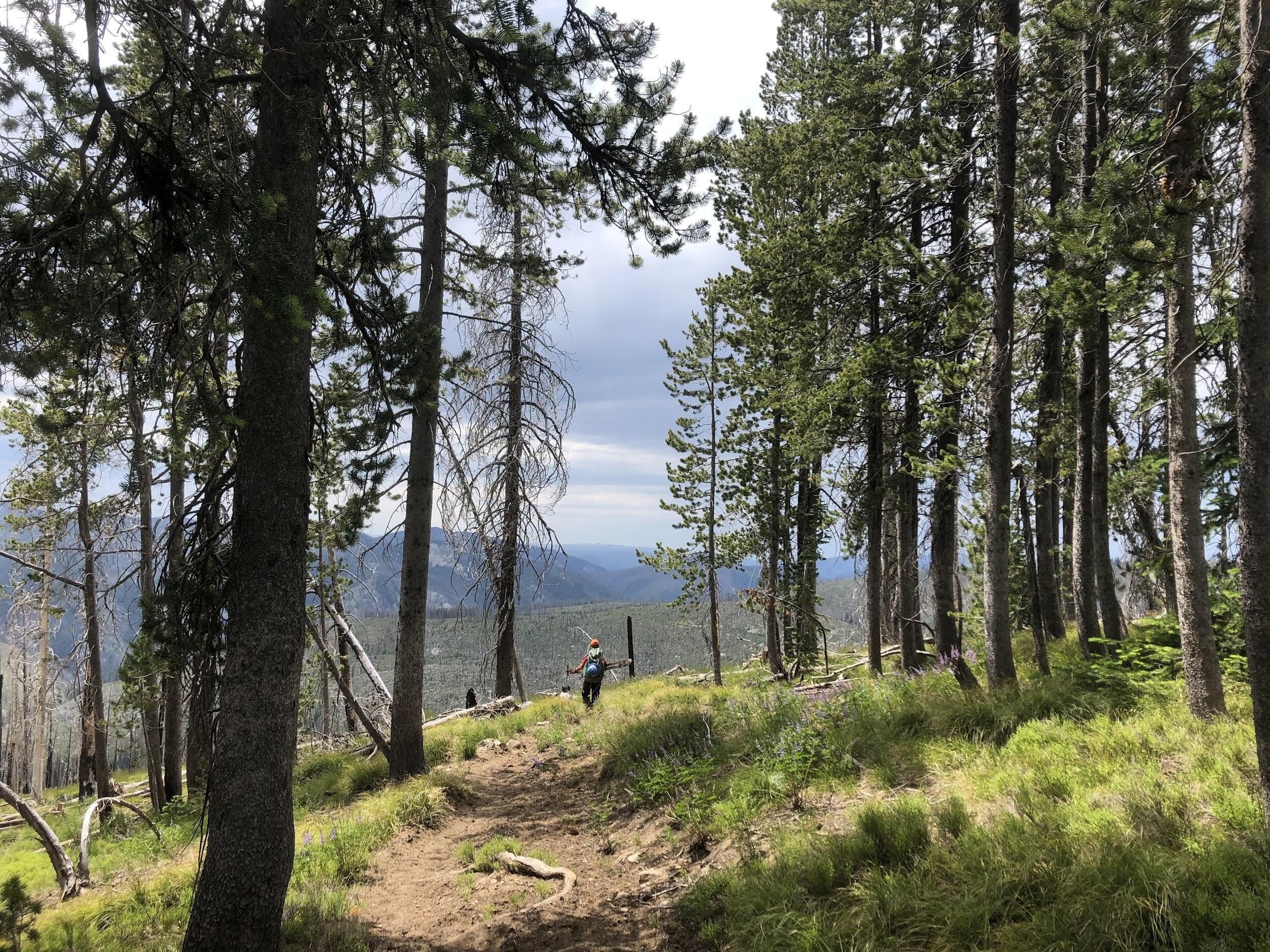Phoebe Mather
Wilderness Ranger Fellow
July 21-28
Bitterroot National Forest/Frank Church River of No Return Wilderness
Devil’s Washbasin, Trail #19
Hitch #3 wasn’t any ordinary hitch, unlike previous trips where our main goal is to clear the trail, the purpose of this hitch was the Devil’s Washbasin Blasting Project. Trail #19 is an existing trail in the Bitterroot National Forest, however, once over the first ridge it is a treacherous descent over slickrock back down into the valley. The task at hand? To blast the slickrock on the existing trail, then put in check steps and clean up remaining rocks to make it safer for stock to pass through.
The Forest Service has had this project planned for a while, and my Wilderness Fellow partner, Madi, and I were lucky enough to take part in the process as this is the last year explosives will be allowed to be used in Wilderness areas. There was the blasting crew lead by Karl Crittenden, along with Chris Murphy and Dave Maclay Schulte, all of whom are with the USFS. Then there was the trail crew, led by Jack Ader the Wilderness Ranger of the West Fork for the USFS, and then Madi and I. This hitch was truly dedicated to the packers, mules, and horses. All of the work we completed along the trail was to ensure safe travel for future excursions, though we did encounter a few surprises along the way.
The first 2 days we cleared down-trees and intrusive rocks to Arrow Creek, about 6 miles in from the trailhead. This is where we would meet the mules and set up camp. Madi and I cherished the luxury of having a pack supported trip. We only had to pack a day-pack each day for the 8 days of hitch, everything else was brought in for us. I even splurged and packed a big ol’ jar of Nutella. Wilderness glamping.
The blasting took place about 4-7 times daily. I must admit, it was a little nerve-wracking to know that we were carrying 40-60lbs of explosives on our back, up hill, for a mile. However, these modern explosives are incredibly safe if transported and used correctly, and there was not a moment on this hitch that I didn’t feel unsafe. Rocks were flying, and the echo from each blast traveled from the rock bowl we were working in all the way down into the valley and each drainage along the way. I thought the noise would end at the mountains in the distance, but the echo would just bounce off the walls and make its way back to us.
The lupine, indian paintbrush, and many butterflies and bumblebees were vibrant and lively throughout the trail, though the dust and mosquitos were also prevalent. The dust caked our hands, arms, and even up our pant legs, while we had squashed mosquitoes along our hairlines from wearing a protective helmet all day. The highlight of everyday was getting back to the ankle-deep creek at camp and either trying to lay down and roll around in all the water this small drainage had to offer, or to stand in the deepest part and fill up our empty nalgene bottles for a refreshing shower/scrub down.
Madi and I headed out further down the trail every evening before dinner time, heading to the base of the distant mountains, or turning onto the Goat Ridge Junction. We ate well, enjoyed the company of new friends, worked incredibly hard, blew up some bedrock, and were present for everything the Frank Church River of No Return Wilderness had to offer. Bugs and all.

![GetAttachment[2].jpg](https://images.squarespace-cdn.com/content/v1/559d365ae4b0233f52969762/1603731785219-GHME1IYIF9U1I316IA7G/GetAttachment%5B2%5D.jpg)










